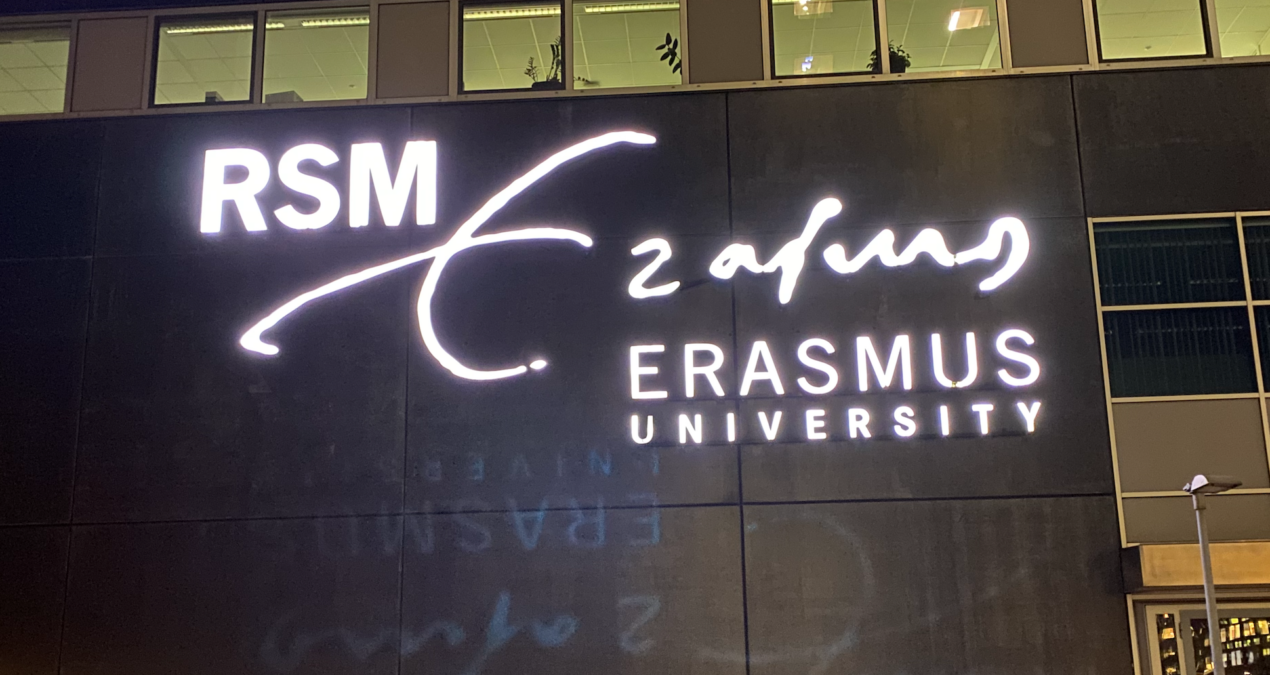After my training in Persuasive Leadership in 2018, I now finally had the chance to follow up and to enter the leadership training called The Challenge of Leadership at Erasmus University. This time the training was on the Woudestein campus in Rotterdam. It was a 4-day program but I dedicated a full week on campus. Actually, the pre-work was quite extensive. So, I started preparations already a few weeks before the training started.

Erasmus Woudestein campus
Most of the input for the training was revolving around a 360-degree survey (on Emotional Intelligence – from the Korn Ferry Hay Group). The survey formed an important part of my training program and it served as a reference point to broaden my leadership repertoire. I’ve asked 18 participants to give an honest (and confidential) opinion about myself. The output from the survey showed strengths and weaknesses. With that, I had a clear focus on what to work on.
Professor Dirk Van Dierendonck and Eline Peeters-Koops did a great job in leading the training. I have gained some great tips and tricks to stay ahead of the game. I truly believe that if you want to stay competitive, you need to learn and improve every day. Accept your weaknesses and work on them. There needs to be a drive and dedication for continuously learning and self-reflection to avoid biases and to stay accurate.
In the program, we participated in many elements of leadership. For instance, the live case from Rob van Oosterveen about his tremendous task to establish the Corporate Bank at Van Lanschot bankers. It was an unexpected assignment for Rob, and yet an inspiring and openhearted story.
Another valuable lesson was in a real boxing clinic. One would not expect to take leadership learnings from such an event. Boxing is all about reading your opponent. When is the right moment to breathe, to attack, or when do you defend?
We addressed challenges like the “Fear of failure” and having a “Fixed Mindset” instead of a “Growth mindset”. Or overreliance on past performances. When making hiring and promotional decisions, leaders often put too much emphasis on performance and not enough on the potential to learn.
We learned about different ways of listening – Downloading from habits v.s. Factual from outside, v.s. Empathic from within, and v.s. Generic from the source. The last mode is the most (inter)active one, enabling to come up with new insights. We learned about our so-called Stretch zone v.s. Comfort zone, v.s. Stress zone (when you stop to learn). All kinds of theories were touched on and explored. Like the VUCA world to describe or to reflect on the volatility, uncertainty, complexity, and ambiguity of general conditions and situations.

VUCA world
We also talked about Servant Leadership. The 21st century has brought much in the way of turmoil and change to the world of business, especially now in COVID times. As a consequence, ways of doing business that were once universally accepted now seem outdated and inflexible in an age where knowledge and flexibility drive economies and socially responsible corporate attitudes. The Servant leader nurtures the spirit of its employees. Employees come first and leaders exist to facilitate their growth collectively and individually. Servant leadership is often misunderstood. To be a leader of people, executives often mistakenly believe, one always has to be the driving force that subordinates follow.
Indeed, research tells us that to be an effective leader individuals must have a certain motivation to lead. However, servant leadership requires a different approach and in addition to the motivation to lead, there must be the need to serve both employees and the organization.
In short, servant leadership is demonstrated through empowerment and the development of people; by expressing humility, authenticity, interpersonal acceptance, and stewardship. Great leaders start as great followers.
Being a strong leader also means that you need to be capable to communicate a (corporate) vision to your team. This was addressed in the training as well. There are two things to remember when trying to communicate an organizational vision to your team. First, you have to target your message. Your team in IT has different needs than a team in Marketing for instance. Leaders are responsible for translating the same vision into different messages that their unique teams will respond to. Secondly, augment logical reasoning with an emotional appeal to inspire. That is how you get buy-in, and how you shift the team’s response from “I have to,” to “I want to.”
